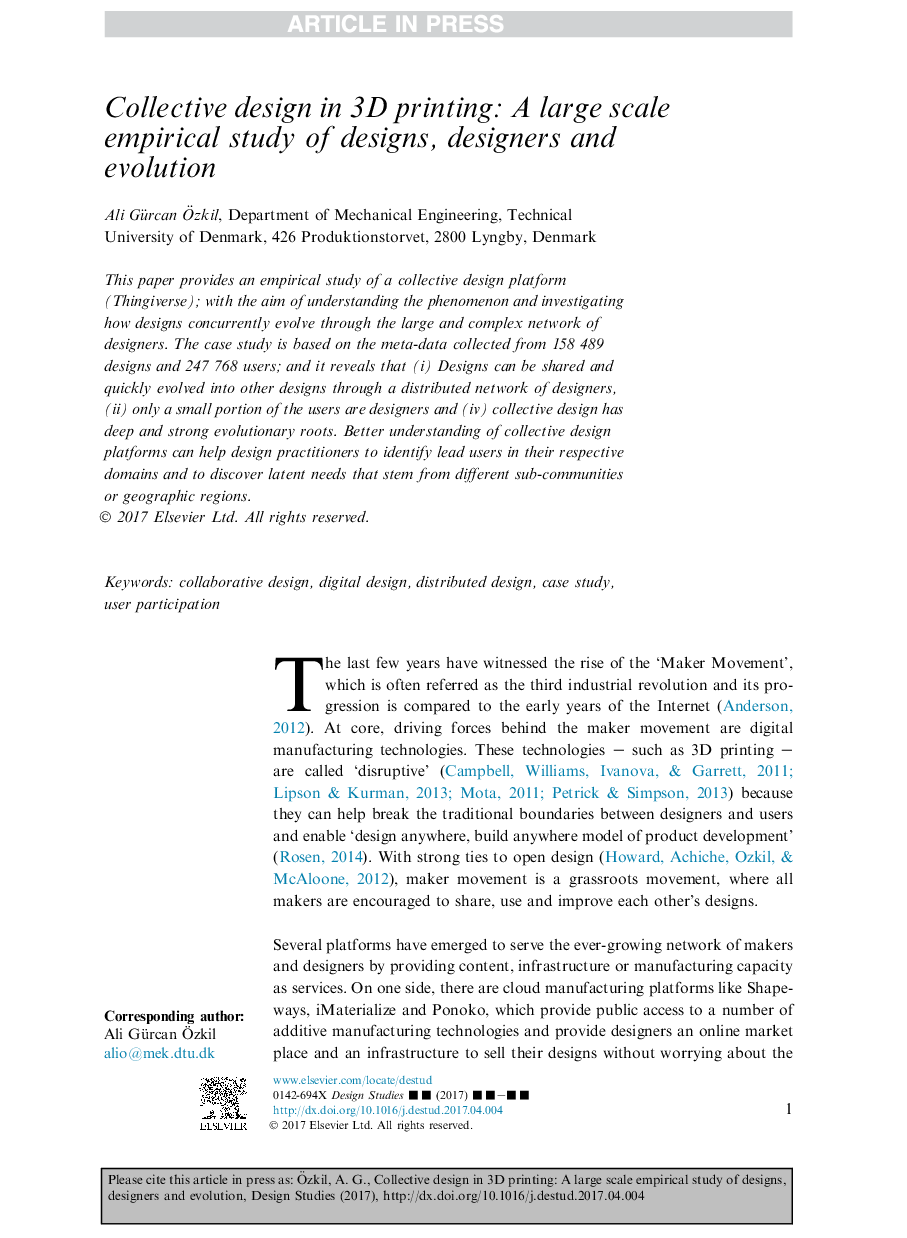| Article ID | Journal | Published Year | Pages | File Type |
|---|---|---|---|---|
| 4918705 | Design Studies | 2017 | 24 Pages |
Abstract
This paper provides an empirical study of a collective design platform (Thingiverse); with the aim of understanding the phenomenon and investigating how designs concurrently evolve through the large and complex network of designers. The case study is based on the meta-data collected from 158Â 489 designs and 247Â 768 users; and it reveals that (i) Designs can be shared and quickly evolved into other designs through a distributed network of designers, (ii) only a small portion of the users are designers and (iv) collective design has deep and strong evolutionary roots. Better understanding of collective design platforms can help design practitioners to identify lead users in their respective domains and to discover latent needs that stem from different sub-communities or geographic regions.
Related Topics
Physical Sciences and Engineering
Computer Science
Computer Graphics and Computer-Aided Design
Authors
Ali Gürcan Ãzkil,
